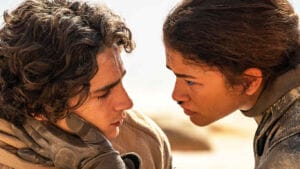Pete’s Dragon, Disney’s latest live action re-imagining of an animated classic, begins with a scene that had me immediately fearing an onslaught of clichés. Pete is enjoying a drive through the forest with his family, cutely trying to read a kids’ book and listening to his parents talk about adventure. His mother tells him he’s the bravest boy she’s ever known; it’s all too saccharine—
Then things take a darker turn. This isn’t your typical Disney film.
Entertainment is changing and the film medium along with it. Disney knows it. Gone are the days of short animated trips with simple payoffs and tinges of racism/sexism. Societies the world over are gradually discovering the value of unbridled empathy and our art is reflecting that: we want emotional resonance, we want joy to rise out of authentic pain, we want our movies to matter.
And so Disney injects these desires into previously unassuming stories: the remake of Cinderella humanized the ‘evil’ stepmother; 2016’s The Jungle Book examined the inherent destructiveness of man. Now Pete’s Dragon is here with a different spin on an old tale: familiar themes of innocence deepened by real stakes.
Admittedly, I have never seen nor know much about the original 1977 Pete’s Dragon, so I went in relatively blind. If Wikipedia plot summaries are to be believed, fans of the original will too: the story has received a complete overhaul. The only elements that remain intact are really just a boy and a dragon. If you’re looking for a faithful adaption, you won’t find it here.
What you will get is a living, breathing, effortlessly beautiful yarn of innocence and magic. After Pete is separated from his parents he encounters a dragon in the forest, one that takes a liking to the boy and starts looking after him. Years later, Pete and his dragon — which he has named Elliot — are best friends living and playing in the forest together. The film proceeds to build a mythology around them, giving Pete’s Dragon a vintage feel from the start.
Director/writer David Lowery immerses the scenes between Pete and Elliot with a natural elegance. Their interactions are sometimes thrilling, oftentimes relaxing, and always heartwarming. In a manner reminiscent of his indie gem Ain’t Them Bodies Saints, Lowery uses every filmmaking facet to find the peace and purity in a close bond. Cinematography, the dragon’s CGI design, the comfortable pacing, and more enrich a relationship that’s sacred in its complexity.
When the plot’s wheels turn and this relationship is threatened, we truly feel the loss and love felt by Pete and surrounding characters because of this gracefully constructed foundation. It’s sentimental, but it’s genuine sentimentality. Otherwise embarrassingly on the nose dialogue fades into the background and lets character relationships raise the stakes.
Bryce Dallas Howard and Robert Redford (!) especially exemplify this tone, as they give performances that whisper warmth and understanding. Karl Urban seems to know his character is more naïve than villainous, but he noticeably strains when forced to deliver some of the more tacky lines. Oakes Fegley is, remarkably, a convincing child actor and Elliot’s CGI form fits right into the real world.
Pete’s Dragon’s biggest downfall is its familiarity. We’ve seen these themes done to death: innocence lost, interfering with nature, the sad misunderstanding of a great beast. It plays out like King Kong for kids: never novel or surprising.
But it’s still a triumph on Disney’s part: a kids’ film so tender and well made that it demands attention from Disney fans and moviegoing adults alike.
★★★★ (4 out of 5)




